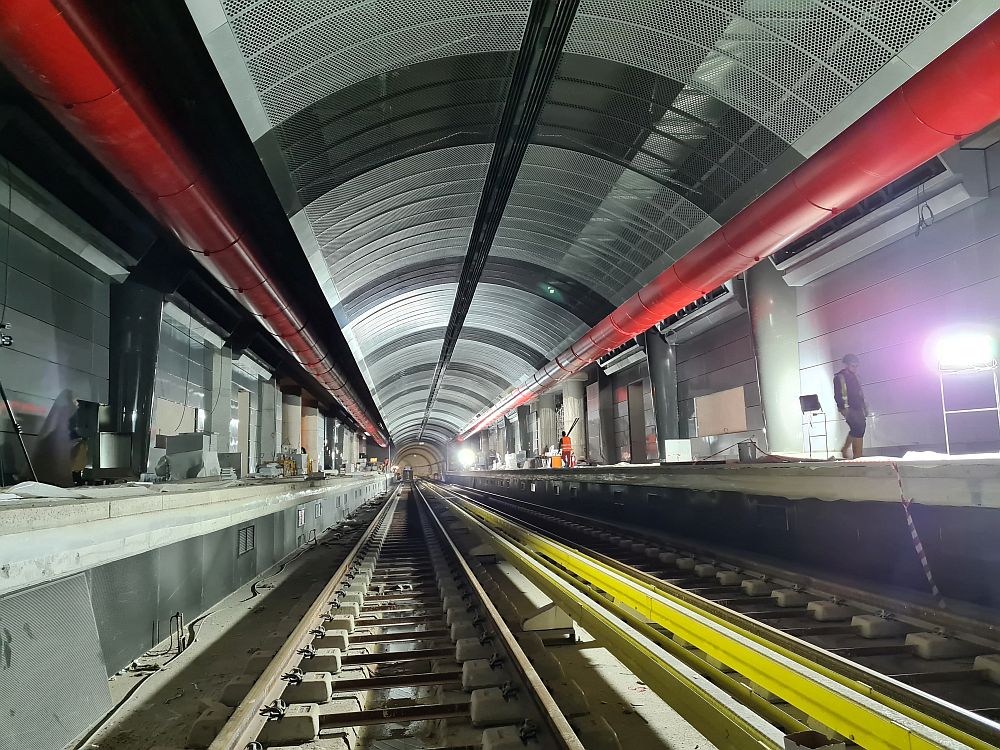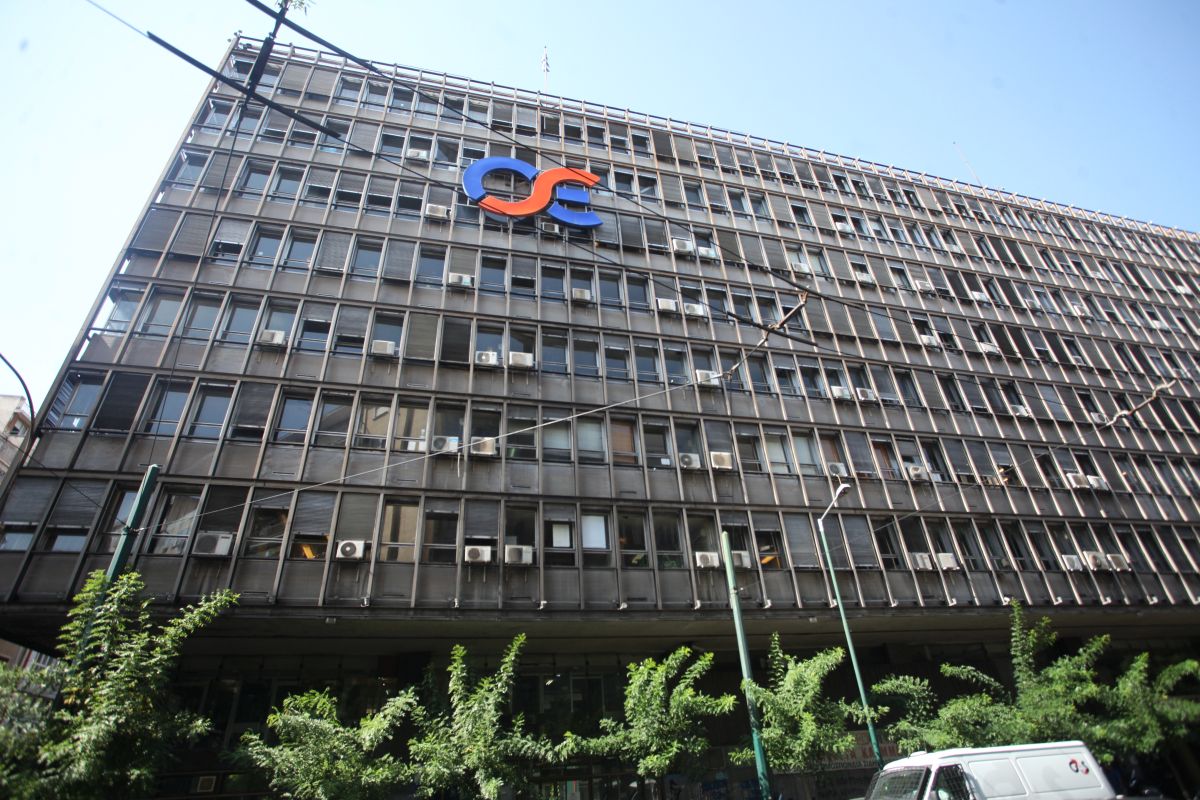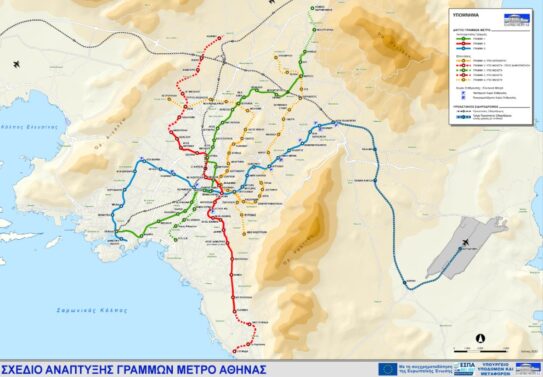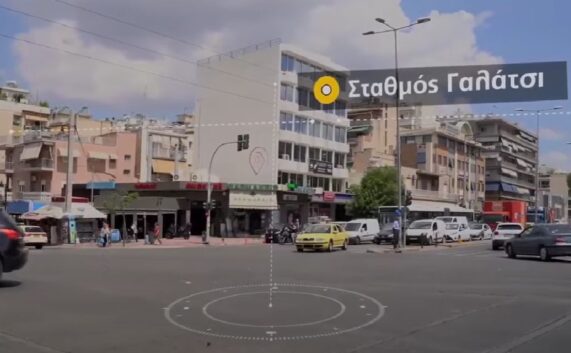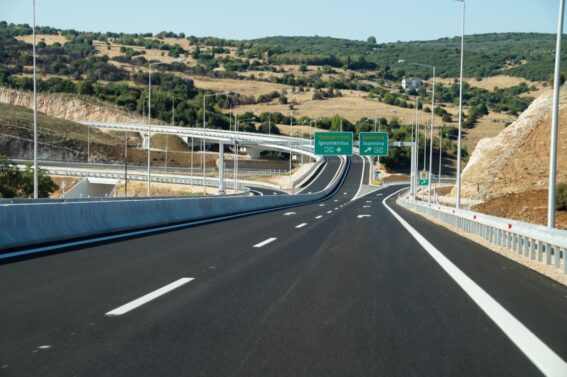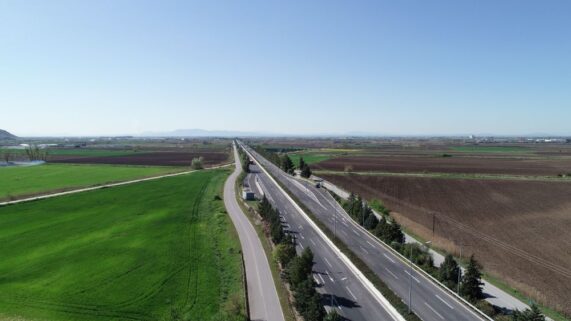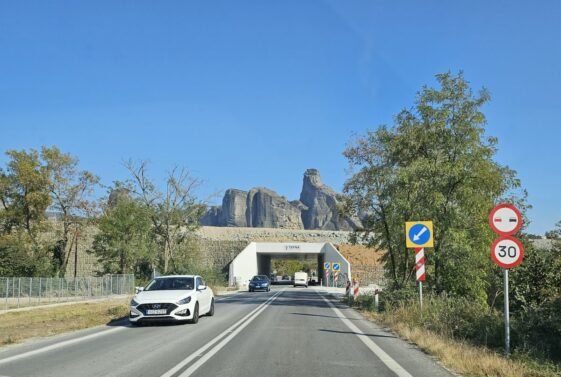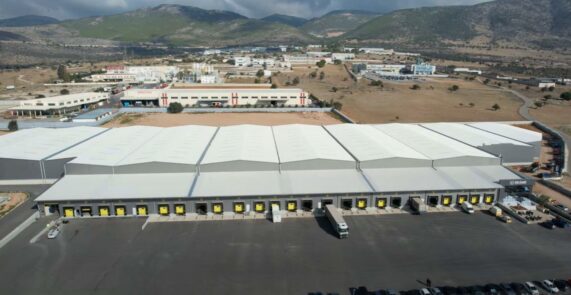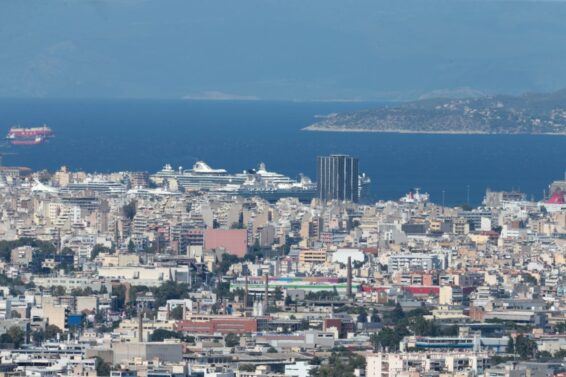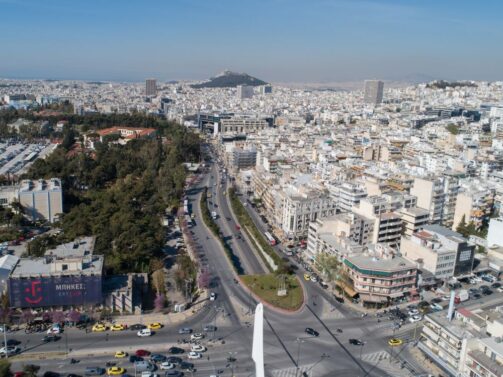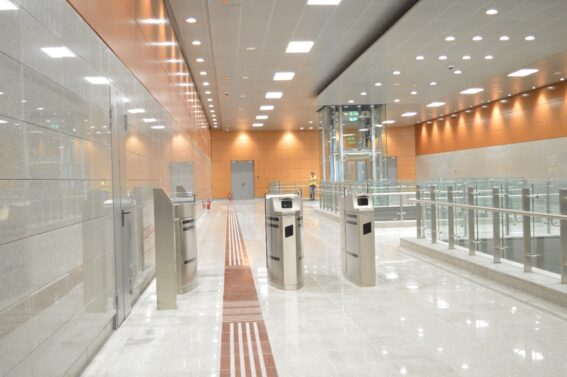Athens currently has the 17th largest Metro system in Europe. One could celebrate this number or respectively complain that it is not satisfactory. However, it is a fact that proves that the capital of the country, although it took decades of discussions and changes, when it set out to create a Metro network, adding to the then line of “Electricos” did not stop expanding it. At the level of kilometers of lines, Athens occupies the 13th place.
In 2019 ypodomes.com had done a research on the metro sizes in the big cities of Europe and in this Athens has a position which is relatively satisfactory. Today this research is renewed and 3 years later we see what has changed in the 50 largest Metro systems in the major urban centers of Europe.
In this new research, Athens maintains the 17th position despite the fact that it adds six new stations and 7.5 km of lines. In a more general remark we can say that the only city that has significantly increased its Metro stations is Istanbul. In 2019 it had 73 stations and today it counts 107 making a big leap entering this year as the 8th largest Metro system in Europe.
What affects the evolution of the Metro network
The rest of the cities are more or less at the same place showing that these three years, two and a half of which were with a pandemic big leaps did not actually happen. As we examine Athens we have some interesting obesrvations.
The first is that it increases its network by six stations. The three stations MANIATIKA, PIRAEUS and DIMOTIKO THEATRO are estimated to be delivered next September and are included in the lines of the city in the following ranking. We should also keep in mind that other big cities are expanding their network and lines for many decades unlike Athens which was left behind in it.
The second has to do with population criteria. We may like to see Greece and Athens as a regional city in Europe, but in reality the country’s capital is the seventh largest metropolitan area in Europe by population.
With this factor, the 17th position of Athens in the Metro systems of Europe is not very flattering. Above Athens are cities with almost 1/3 of its population, such as Oslo and Stockholm, while higher are cities with significantly smaller populations such as Vienna. At the same time, the number of Metro stations in Rotterdam reached Athens metro station, again a city with a smaller population.
At the end of the day we do experience the population factor every day, since the partial metro network offered by the Athenian Metro to its urban complex has to do with its traffic saturation.
The… factor of the future
The third observation is… .the future. After many years of discussions, Athens has finally under construction a new 4th line that will add 15 new stations to the city network by the end of the current decade. At the same time the extension to Ilion of line 2 with 3 more stations is getting closer. With these additions and with the ideal scenario for 18 new stations to operate by 2030, Athens will reach 99 stations.
The “criterion” of the future is not one of the negative points of Athens but we should think that if in 2022 there is such a traffic load, in 2030 even with 18 new stations it will be enough for the city to really breathe and become more sustainable?
Here we must take into account the decade of the financial crisis. During that period we saw that only the extension to Piraeus is being implemented, which in fact had an initial completion schedule for 2017. At the same time, in 2017, the auction of line 4 could actually take place which started which before 2021.
What we all understand is that the city needs larger Metro network. It needs more connections to more neighborhoods and municipalities and maybe more lines. We expect the development of studies for the extensions to Petroupoli, Maroussi / Lykovrysi, Glyfada, Kallithea, Daphne. These expansions will be able to further expand the Metro network and make Athens a better city to live in.
In 1869 the first Metro line
Although Athens installed its first metropolitan Metro line in 1869, it subsequently failed to develop a large network of lines and stations in the capital. Until 2000 this first Metro line (better known as Electricos or ISAP) remained the only one in the city, almost entirely above ground and had simply extended from Piraeus to Kifissia.
After decades of discussions, objections and problems, in 1993 Athens begins a great effort, many times under adverse conditions (archaeological finds, difficult ground, crisis) and manages to build another 2 lines with a total of 41 stations. Along with Rome, they are considered the two most difficult cities in all of Europe to build a Metro network due to their thousands of years of history.
Today the capital has a total of 3 Metro lines 89.8 km with 71 stations (along with the common section of the Suburban and the extension to Piraeus) covering a significant part of the city, but not the largest. A new 4th Metro line from the Alsos Veikou to Goudi with 15 stations is under construction and as mentioned above, the auction for the extension of line 2 to Ilion with 3 stations is expected to raise the total number of stations to 99.
In the top twenty in Europe
Among the very large Metro systems in Europe, Athens ranks above average having covered a significant percentage of the major Metro cities in the last 20 years. Ypodomes.com in its renewed research finds that Athens is ranked 17th among European cities in number of stations and 13th in network kilometers.
It is in the same category as the cities: Rome (73), St. Petersburg (72), Rotterdam (70), Prague (61), Newcastle (60) and Brussels (59). But let’s see which are the dominant cities in Europe in area and Metro stations and the position of Athens in the 30 + 20 largest Metro systems in Europe:
The first place is held by Paris with the most extensive network in Europe with 308, while with 276 stations follow Madrid and London. The top five is completed by Moscow with 250 stations and Barcelona with 189 stations.
Positions 1-10
In the first place is PARIS with 308 Metro stations and 226km network.
In second place is MADRID with 276 Metro stations and 293km network.
In third place is LONDON with 276 Metro stations and 402km network.
In fourth place is MOSCOW with 250 stations and 435km network.
In fifth place is BARCELONA with 189 stations and 166km network.
In sixth place is BERLIN with 175 stations and 155.4km network.
In seventh place is MILAN with 113 stations and 101km network.
In eighth place is VIENNA with 109 stations and 84km network.
In ninth place is ISTANBUL with 107 stations and 136.6km network.
In tenth place is OSLO with 101 stations and 84.2km network.
Positions 11-20
In eleventh place is STOCKHOLM with 100 stations and 108km network.
In twelfth place is MONACO with 96 stations and 103.1km network.
In thirteenth place is HAMBURG with 93 stations and 106km network.
In fourteenth place is FRANKFURT with 86 stations and 64.9 km network.
In fifteenth place is ROME with 73 stations and 60km network.
In the sixteenth place is SAINT PETERSBURG with 72 stations and 124.8km network.
In seventeenth place is ATHENS with 68/71 stations (if we count the 3 stations that will be delivered in September to the extension to the Municipal Theater of Piraeus) and 89.8km network (with this extension).
In eighteenth place is ROTTERDAM with 70 stations and 100.6 km network.
In the nineteenth first place is BUCHAREST with 62 stations and 78xm network.
In twentieth place is PRAGUE with 61 stations and 63.1km network.
Positions 21-30
In the twenty-first place is LIL with 60 stations and 45km network.
In 22nd place is NEWCASTLE with 60 stations and 77.5km network.
In the twenty-third is BRUSSELS with 59 stations and 39.9 km network.
In twenty-fourth place is LISBON with 56 stations and 44.5 km network.
In the twenty-fifth place is ANKARA with 54 stations and 64.3xm network.
In the twenty-sixth place is KIEVO with 52 stations and 67.6 km network.
In 27th place is AMSTERDAM with 52 stations and 41km network.
In the twenty-eighth place is NUREMBERG with 51 stations and 37.5km network.
In the twenty-ninth place is SOFIA with 47 stations and 52xm network.
In third place is LYON with 40 stations and 32.1xm network.
Ακολουθούν οι πόλεις στις θέσεις 31-50:
31.Μπούρσα (39 σταθμοί-38,9χλμ δίκτυο)
32.Κοπεγχάγη (39 σταθμοί-38,2χλμ δίκτυο)
33.Τουλούζη (38 σταθμοί-28,2χλμ δίκτυο)
34.Βαρσοβία (34 σταθμοί-35,5χλμ δίκτυο)
35.Μίνσκ (33 σταθμοί-40,8χλμ δίκτυο)
36.Μασσαλία (31 σταθμοί-22,7χλμ δίκτυο)
37.Χάρκοβο (30 σταθμοί-38,7χλμ δίκτυο)
38.Λωζάνη (28 σταθμοί-13,7χλμ δίκτυο)
39.Νάπολη (26 σταθμοί-20,2χλμ δίκτυο)
40.Μπακού (26 σταθμοί-38,03χλμ δίκτυο)
41.Ελσίνκι (25 σταθμοί-35χλμ δίκτυο)
42.Τιφλίδα (23 σταθμοί-27,2χλμ δίκτυο)
43.Τορίνο (23 σταθμοί-15,1χλμ δίκτυο)
44.Σεβίλλη (22 σταθμοί-18,2χλμ δίκτυο)
45.Σαν Σεμπάστιαν (21 σταθμοί-29,8χλμ δίκτυο)
46.Μπρέσια (17 σταθμοί-13,7χλμ δίκτυο)
47.Σμύρνη (17 σταθμοί-20,1χλμ δίκτυο)
48.Μαγιόρκα (16 σταθμοί-15,5χλμ δίκτυο)
49.Γλασκόβη (15 σταθμοί-10,4χλμ δίκτυο)
50.Ρεν (15 σταθμοί-9,4χλμ δίκτυο)
ΜΗΝ ΞΕΧΑΣΕΤΕ
- Ακολουθήστε το ypodomes.com στο Google News και μάθετε πρώτοι όλες τις ειδήσεις για τις υποδομές στην Ελλάδα
- Αν είστε επαγγελματίας του κλάδου, ακολουθήστε μας στο LinkedIn
- Εγγραφείτε στο Ypodomes Web TV

